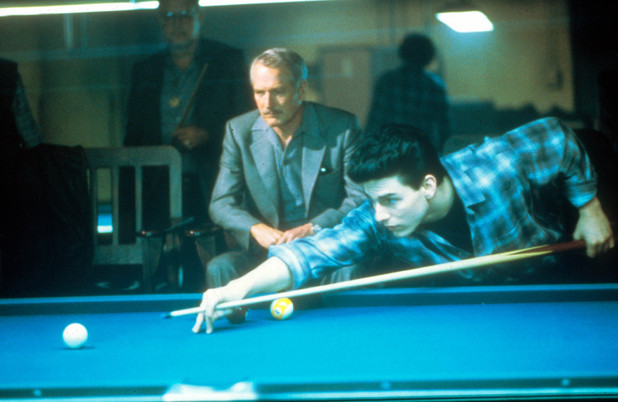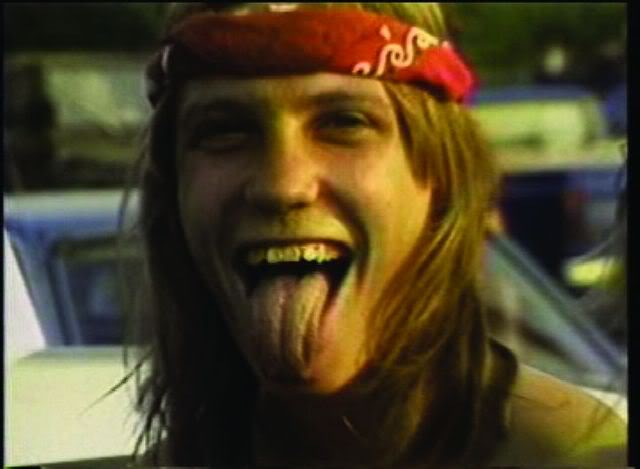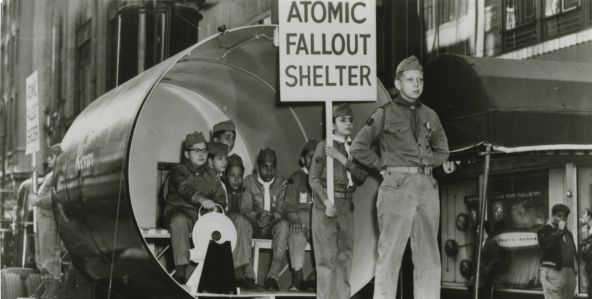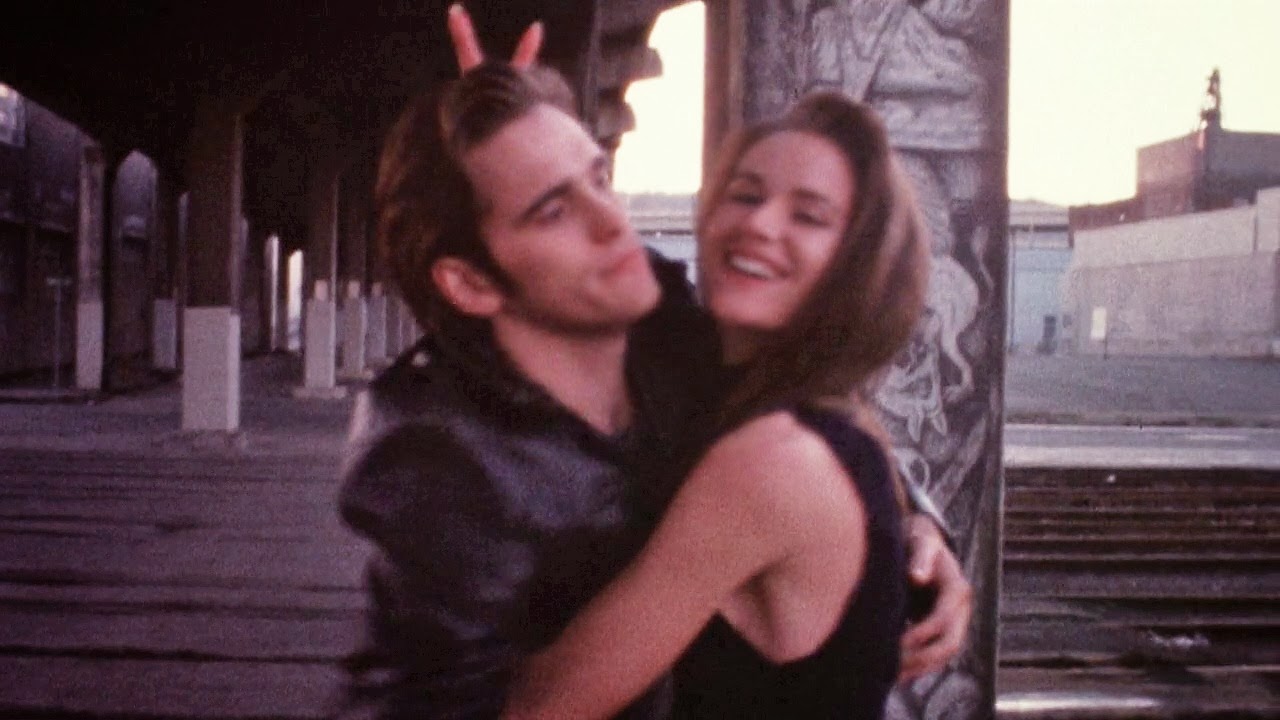6. Birdy (1984, dir. Alan Parker)

Birdy is based on a novel by William Wharton and stars Nicolas Cage and Matthew Modine in the role that got him Joker in Full Metal Jacket. Unusual for an Alan Parker film, and coming after Pink Floyd the Wall. It is surprising that it did get financed because there is no glory glory hallelujah moment to tie everything into a pretty bow, or apologize for the war. It is a slice of what something as horrible and big as the Vietnam war took on the average working class people without screaming the polemic.
Matthew Modines’ portrayal of Birdy, a man who was quirky before being sent off to the bush, but arrives home a huge mess, is stunning to say the least. His undertones of frailty and the chaos in his soul is never overplayed or forced. Nicolas Cage plays his neighborhood pal who coincidentally lands in the same VA hospital after being wounded. Since Birdy hasn’t talked since he arrived, the Doctor thinks that one way to treat Birdy is to have his old neighborhood pal, equally scarred by the war, talk to him.
Birdy learned a lot from One Flew Over the Cuckoo’s Nest, but stays out of the dreaded homage territory. This is Modine’s greatest performance- perhaps Cage’s too. The eerie soundtrack is by Peter Gabriel. In limited release, it earned a paltry $1.4 M against a $12 M budget. Birdy was chosen by the National Board of Review as one of the Top Ten Films of 1984, and won the Grand Prix Special Du Jury at the 1985 Cannes Film Festival. It features one of the great endings in modern cinema.
7. The Color of Money (1986, dir. Martin Scorsese)

The Color of Money has a truly bizarre history. This film was bonsai-ed to be an off the charts smash, and box office wise, Oscar -wise, visibility-wise, and culture-wise it was nothing short of a meteor, but very soon afterward, it’s been forgotten for the most part, and if it isn’t, it is viewed with disdain by Scorsese bros. It pulled in more money than Goodfellas. It gave Paul Newman his first Oscar (some view it as the Academy’s apology for not sooner). Tom Cruise just came off Top Gun, guaranteeing the picture a smash opening weekend. Pool halls across America filled with would-be hustlers, and Werewolves of London became a smash again which led to Zevon’s “come back” album Sentimental Hygiene.
All of this is well and fine, but The Color of Money also happens to be a great movie. If there is a director who knows how to shoot a tent pole scene that will filter into the culture, it is Martin Scorsese. The Mozelle/Werewolves scene should be burned into cinefile DNA, but isn’t. Everyone is double crossing everyone else, but perhaps the best line by the best performance in the movie is delivered by the rustic Italian beauty Mary Elizabeth Mastroantonio “We (Vincent and she) met in lock-up, after I had robbed his mother’s house. This locket which I stole, Vincent said his mother has one just like it.”
The best scenes outside of the pool playing are between Newman and Mastroantonio- they act like mother and father to the child Vincent, a pool savant, and an idiot in all other things. By all metrics, The Color of Money is a smash. So…why isn’t it up there with Scorsese’s masterpieces? It’s still a mystery.
8. Heavy Metal Parking Lot (1986, dir. Jeff Krulik and John Heyn)

If you’ve been in a band, at some point in your career, this movie will come up. If you’ve never been in a band, but you’re a stoner, chances are pretty good that you’ve come upon this on youtube between hits and re-upping Oreos. Anyone else, well, you’re not in the club, yet. This is 30ish minutes of pure nirvana, rocker ethos at its bare bones, a testament to the future of humanity, a time capsule that captures a crucial point in human evolution. Two guys with a video camera interviewed fans in the parking lot before a Judas Priest concert. Now, if I have to explain further, I won’t. I will just tell you to go and watch.
Be delighted by the wit and wisdom of these young adults. Their unselfconscious lack of political correctness would singe today’s eyebrows. They probably singed 1986’s eyebrows as well, but perhaps that was the point. Watch the film, then watch the film makers follow up- where is Zebra Man now? Also know that also every band who’s worth a damn had this on their tour bus, shelved right next to Spinal Tap, and a travel-sized statue of Pazuzu. De rigeur!
9. The Atomic Cafe (1982, dir. Kevin Rafferty, Jayne Loader, and Pierce Rafferty)

”Watched from a safe distance, this is one of the most beautiful sights ever seen by man.”
-Briefing to human test subjects before above ground atomic bomb test.
The Atomic Cafe is Atomic age newsreels and informational messages put together in chronological order, without narration, about the life and times of the atomic bomb. One of the first found footage hits, it played for movie audiences on the tail end of MAD (Mutually Assured Destruction)’s first world tour. (MAD, of course, is still a thing, in case you haven’t been keeping up.) If the entire film were just ho-ho funny PSA’s the joke would have evaporated in the first ten minutes, but the film makers are saavy enough to also touch on the tragedy of the Rosenbergs, as well as feature messages from President Truman, and the free-world’s shock at the Russian getting the bomb.
The film juggles what seems to be an avalanche of propaganda that tried to convince the public that a nuclear war is survivable. The propaganda was pervasive, and with not low production values. Civil defense portions have school kids making Survival Kits with jarred foods that we can all enjoy in the bomb shelter, high on tranquilizers, while we wait 28 years for safe radiation levels. “Duck and cover!” was the famous tagline for the PSA: Bert the Turtle tucking in his legs and head., followed by shots of kids in and around Anytown, USA, always aware that nuclear war could start at any moment and were forever ready to…duck and cover.
Almost as funny as the instantly imfamous 2022 NYC PSA about how to stay safe during a nuclear attack. The message is clear- the powers that be with their fingers on the trigger are, at the very least, far removed from reality for allowing this insanity. The Atomic Cafe contains the scariest shot in all of cinema- on a test site, a small yield nuke detonates, then the camera pans over to a trench where, per orders, soldiers get out and make their way towards the mushroom cloud.
10. Drugstore Cowboy (1989, dir. Gus Van Sant)

Quality wise, probably the best crafted film on this list, even superior to The Color of Money. This was Gus Van Sant’s second full length feature and featured Matt Dillon. He is perfect as Bob, the leader of a heist gang who travel around and rob drugstores of their dope. This was Heather Graham’s second starring role. James LeGros and Kelly Lynch round out the Hole in the Wall Gang. William S. Burroughs makes an appearance as the Tom the Priest, Max Perlich is ultra weasel David, Grace Zabriske is Bob’s Grace Zabriske-like mother.
It takes place in the Pacific Northwest and in the freewheeling early 70’s- Dillon plays with Belmondo’s character from Breathless, Warren Beatty’s Clyde from Bonnie & Clyde, as well as his own image after gracing 110% of16 magazine covers. James Remar plays the Javert-like cop who is out to get Bob. Everything around Bob and the gang seems to be dying on the vine, brought home by the old music which sounds like it’s being played on a Victorola. The gang are having adventures and getting high and being alive. Drug addict movies usually end with the hero getting sober and redeemed, but not this one. He goes back to his wicked ways-it’s the only thing that makes him truly alive.
Van Sant, along with Spike Lee and Steven Soderbergh, became one of the few directors of the late 80’s era who made big-budget studio pictures and smaller independent fare inside the same career. Van Sant’s follow-up was the stunning My Own Private Idaho, but Drugstore Cowboy bore that film, allowing the Van Sant to experiment unself-consciously with studio backing.